A little over a year ago, a strange device entered my household. My wife, a lover of all things nostalgic, bought an all-in-one music box off Amazon.com, including a radio, a cassette player, a CD player, Bluetooth connectivity, and a vinyl record player. She did not know where to put this device, so it ended up in my office. Shortly thereafter, my wife began purchasing vinyl records. My wife’s taste in music is decidedly different than mine, so she brought my son into her fold, and vinyl records of classic rock began showing up, including Physical Graffiti, by one of my favorite bands, Led Zeppelin.
The all-in-one device was an interesting concept, but music sounded contained on it, as if you were listening to it through a tunnel. The sound was also tinny. Thinking the problem was the speakers, I brought up better speakers that had been sitting in the basement – Sony floor speakers I had not used in probably twenty years. There was an out jack, so I connected the speakers. No volume. No problem, I thought – the record player needs to go through a pre-amp. I have an old Kenwood receiver that has a built-in pre-amp. I hooked that up. At this point I was running the record player through a decent, albeit old, sound system. It actually sounded worse – far more distorted – than it had sounded through the horrible speakers built into the all-in-one device. I bought a diamond stylus, and that had no effect either.
The record player on the all-in-one device was incredibly cheap. It did not even have an adjustable counter-weight on the tone arm. Since the stylus actually rests in the record grooves, (the sound wave being created literally by dragging the stylus through the grooves), having the correct level of down-force is very important. I would never buy a record player that does not have an adjustable counterweight on the tone arm, and though I would use the other parts of the device (the CD player and Bluetooth, primarily), I did not really like the device.
By this time, my wife and son had put more money into records than had gone into the all-in-one unit, and I could not get over the futility of playing expensive vinyl records when they sounded like garbage.
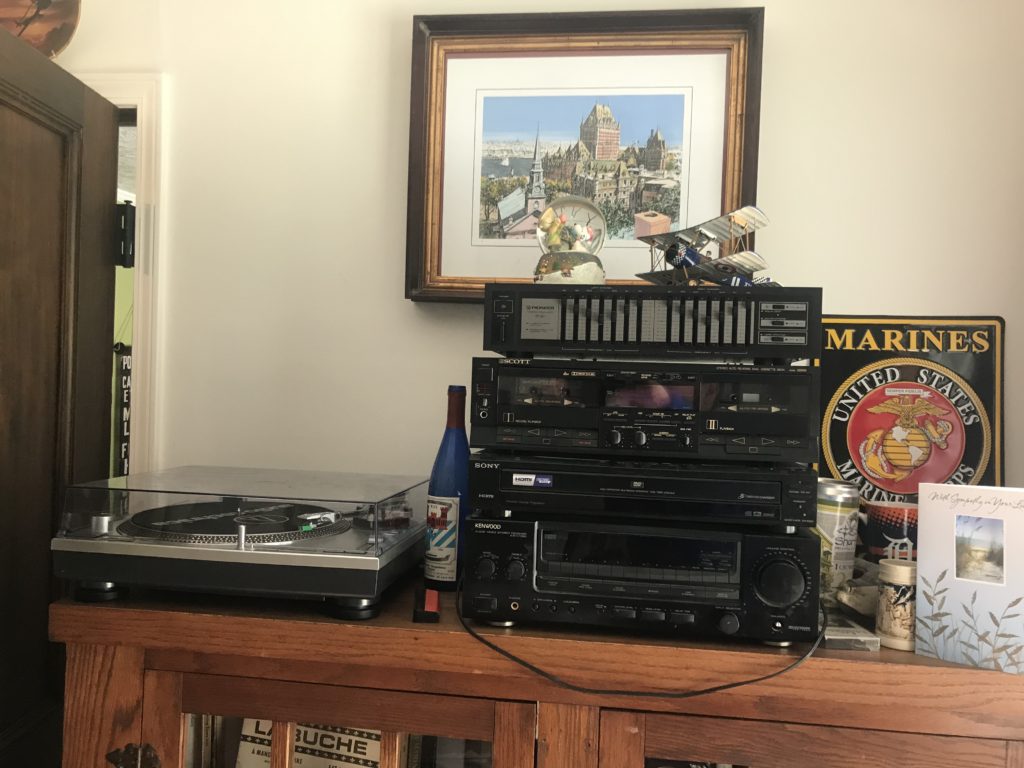
I actually knew a bit about records, having grown up in the 1970s and 1980s. I’d had a close friend, years ago, who DJ’d several times a week, and he taught me to fill in for him whenever he, for whatever reason, could not make a gig. His setup was all vinyl. As the summer of 1990 dawned, he asked me to drive him to the ferry for Martha’s Vineyard, where he was going to work as a painter. He paid for all my expenses on the trip, and he gave me my choice of his record players, and whatever vinyl records of his that I wanted.
Most of his vinyl were your typical late 1980s pop music, and were utter garbage, at least in my opinion, but he also had some classic rock. He had a Santana album, some Pink Floyd, Led Zeppelin, The Who – all kinds of great music. I took two milk-cartons of vinyl records, and a really nice, professional Technics linear turntable (the SL-DL5), which I used for years. Because of this, I knew full well what records on a good system sound like, and it was nothing like what the all-in-one unit provided.
Linear turntables were an interesting, short-lived fad of the 1980s. The idea was that by moving the arm in a straight line across the record, as the record played, rather than having it pivot from a fixed point, the stylus could be kept in the exact optimal angle the entire time a record was played. Eventually record player producers figured out that if they curved the tone arm just right, they could minimize any changes to the stylus angle, even with a pivoting arm, and the linear turntable fell into the dustbin of history. I don’t remember how or when I got rid of mine, but it, and the vinyl records I’d had in 1990, are all long gone.
Flashing back to today, I eventually convinced my wife to let me buy a decent (not a great) turntable. I settled on the Audio Technica AT-LP-120-USB. It’s a direct ripoff of the professional Technics turntables from back in the day. The Technics is a much better turntable, but I’m not blasting music through giant Peavey speakers for a paying audience, so the Audio-Technica is more than sufficient, and costing about $300 (whereas the Technics it is a rip-off of costs well over $1,000), the Audio-Technica seemed like a better starting point.
My current setup (shown above) includes my old Sony three-way floor speakers, the Audio-Technica AT-LP-120-USB, my old Kenwood amp, an old Pioneer seven-band equalizer I picked up from a second hand store, Scott dual tape-deck I also got from a second hand store, and a Sony five disk CD/DVD player. I have a cable so I can plug in an MP3 device, and I have a pair of Insignia Bluetooth 2 speakers in the kitchen (not shown), connected via an Aluratek Bluetooth Audio Transmitter. The only things not ‘vintage’ are the turntable, the cord to plug my phone in, and the Bluetooth pieces.
Bluetooth speakers have gotten kind of a bad rap. I initially bought them to avoid having to run lines into the kitchen. Bluetooth 1 was only capable of mono sound, but Bluetooth 2 supports stereo, and the speakers in my kitchen sound as good, and in some ways better, than the floor speakers in my office. My vintage speakers have a richness to them that the Insignia Bluetooth speakers can’t match, but the Insignia speakers are more crisp and precise. I can’t even imagine how good really nice, modern speakers, must sound. Perhaps someday I’ll find out…
The one thing I do not like about the Bluetooth speakers is that there is a delay between the music playing on my Sony speakers, and the sound on the Insignia speakers. As a consequence, I can’t really run both at the same time. The Insignia speakers are also self-amplified, so they do not work well with the graphic equalizer. As a consequence, when I listen to music in the kitchen, I have to put my equalizer in standby mode.
I had my stereo equipment and my speakers very close together for some time, in the corner of the office where I now store my records. This can, and sometimes did, cause distortion. I’ve since re-arranged my entire office to keep the speakers away from the turntable, and I get much better sound. My record collection has also swelled to over 300 records.
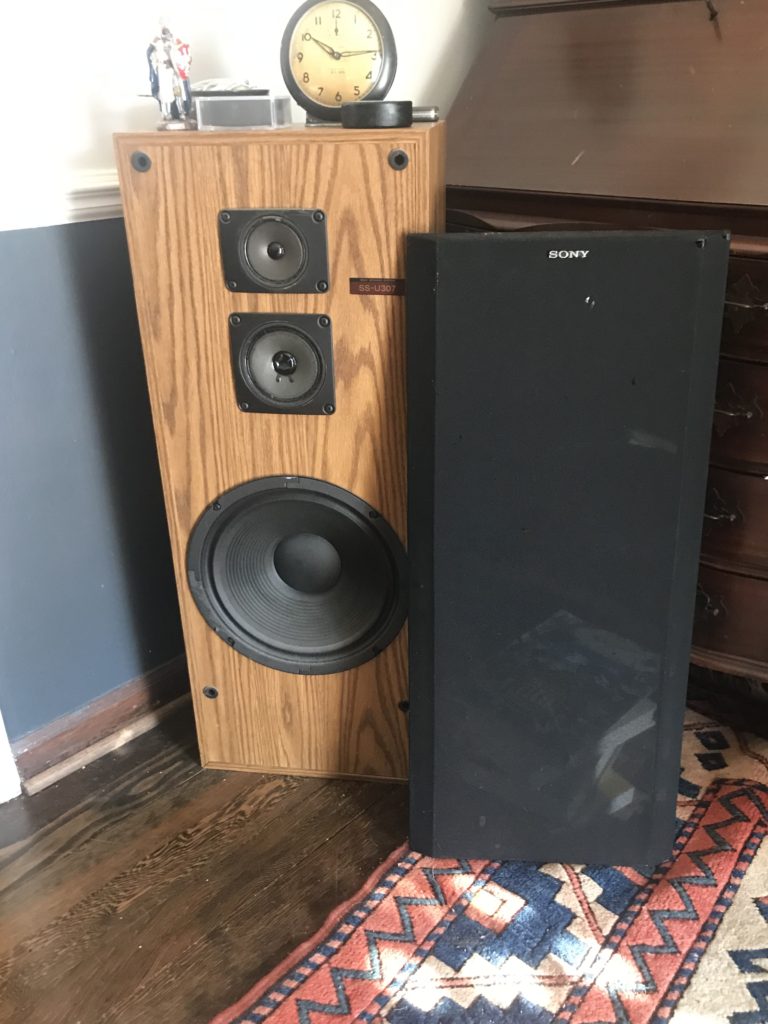
There is a great deal of debate as to whether vinyl records are ‘better’ or ‘worse’ than digital. I find that a lot of this depends on the equipment used. Vinyl sounds terrible on cheap equipment – particularly with a cheap turntable – so if you don’t want to spend any money, digital formats are better. That said, consider what digital is. We all know that if you blow a digital photograph up enough, it becomes pixelated. This is because the photograph is made up of tiny dots, and as we make the photo larger, these dots get larger too. The more dots per square inch, the more we can zoom-in without the photo becoming overly pixelated, and since our eyes are only capable of seeing a finite level of clarity anyway, digital photos often look as good as analog.
But think of the theoretical capabilities of an analog photo. The only limitation to how far you can blow the photo up before it loses clarity is the focus of the camera when the picture is taken, and if you could get a perfectly focused analog picture, you could zoom in however far you wanted, without ever losing clarity. This is how, long before digital existed, a satellite in orbit could capture imagery so crisp as to allow an analyst to read newspapers over people’s shoulders.
We have a hard time visualizing the same phenomenon with sound, but the same basic thing happens. Rather than capturing an entire sound wave, digital formats take samples of the sound at various points along the wave. A 32 bit MP3 takes 32 samples, whereas a 64 bit MP3 takes 64, and a 128 bit MP3 takes 128 samples, per second. If we were to slow the music down, we would begin to audibly hear each burst of sound, as well as the gaps between, just as a digital photo becomes pixelated when blown up.
A CD takes the equivalent of 1,411 samples per second, which is obviously much higher than any MP3, making the CD, and not the MP3, the best digital format.
1,411 samples per second sounds like a lot of samples, but it’s really much more complicated than that. Suffice it to say that I am grossly simplifying very complicated math, and that the sampling rate deals with multiple channels at specific frequencies, and that though the higher number is clearly better, it really isn’t anywhere near as simple as 1,411 samples per second. That said, unless you are going to study this stuff for a living, my gross simplification is sufficient to understand the basic dynamics between analog and digital sound, as well as to see why a CD sounds better than an MP3.
With analog, there are no breaks in the sound wave. Analog provides the entire wave, and listening to a perfect analog reproduction would be no different than listening to an actual live performance.
There is no such thing as a perfect medium, but modern analog equipment is damn good, and if you listen to complex arrangements with complex sounds, an analog reproduction will have a richness and vibrancy even a CD cannot reproduce. Cymbals, for example, sound notably better on a vinyl record than in a digital format. MP3s, in order to compress file sizes, actually skip many of the sounds in an analog signal completely, and if you listen very closely to an analog recording, and to an MP3 of the same recording, you’ll often notice entire instruments missing in the MP3. CDs are not compressed, so they do not have that problem.
There are, of course, vinyl detractors out there, who will point out that our ears are not capable of discerning the difference between a really fast digital sampling rate, and a truly analog signal. These people will point out that CDs lack the imperfections related to all analog formats (in the case of vinyl, mostly hiss and pop sounds). There is a lot of truth to that. The first time I listened to a CD, I was blown away by the fact that I could actually hear the guitar clip against the strings – something you won’t get from a vinyl record. At the same time, everyone’s eyes and ears are different. Ted Williams was one of the greatest baseball hitters ever, partially because he could see the rotation of the baseball while it was in the air, and if we took a digital photo and started to slowly zoom in, Ted Williams would be able to see the pixilation long before I could. I believe that the better your ears, the more of a difference having the full analog signal makes, so when deciding on whether or not to add vinyl to your collection, ask yourself how good your ears are. Also note that a clean vinyl record has very little background noise. If you take care of your vinyl records, and clean them occasionally (I use the Vinyl Styl Deep Groove system), you can virtually eliminate background noise. In many ways I think vinyl is superior to compact discs.
Another point with vinyl is that each record is a physical object, with a very specific process for playing it. Some people are really into the record jacket, the inner-sleeve, and all of the other things that come with vinyl. I keep all of that stuff, and I do appreciate it, but for me it’s the record itself that counts, along with the experience of listening to it.
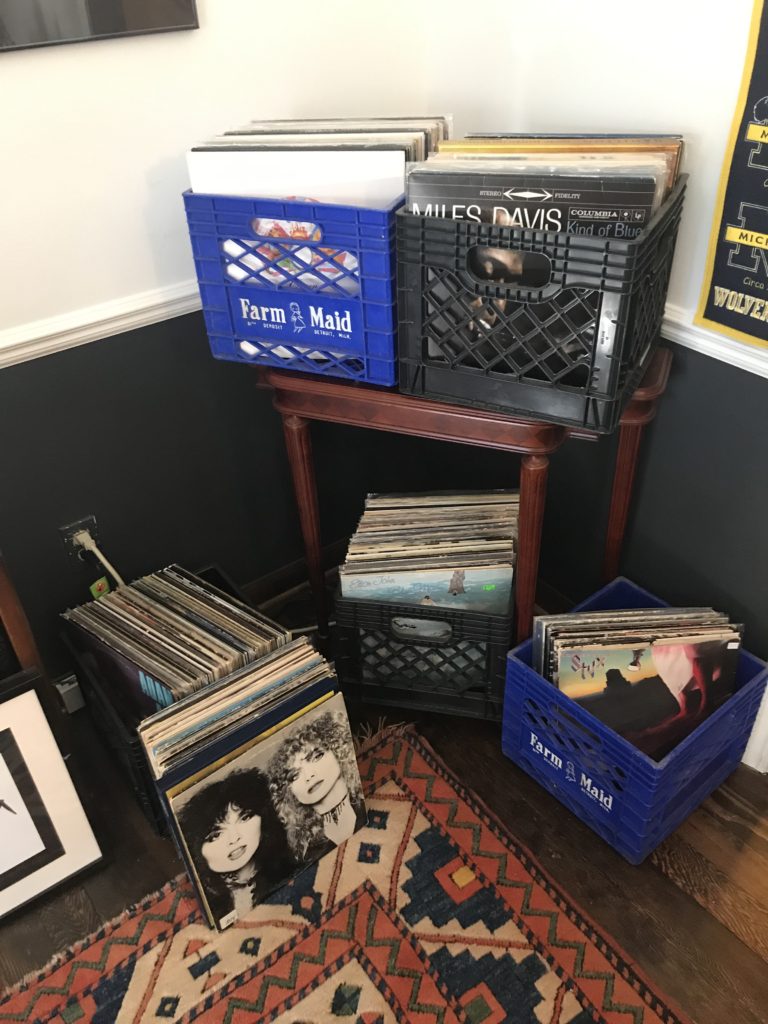
The process matters. You don’t just throw on a record. You have to find it from within your collection, take it out of it’s sleeve, place it carefully on the record player (being careful not to touch the grooves), go over it with an anti-static brush to remove both static and dust (an anti-static gun can do wonders too – static does more to ruin sound than does dust), and brush the stylus with a stylus brush, before you can even start to move the tone arm into position. If you are not careful with the tone arm, you can scratch your records. You have to flip the record to hear the other side. You have to clean them once in a blue moon. The slow, deliberate process you go through really does make you listen to the record more carefully than you otherwise would. My wife used to tell me to put on a vinyl record when we had friends over, but I don’t do that anymore. Why bother? If we are not going to immerse ourselves in the experience, I can plug in my phone and play MP3s. Vinyl is not a good format for background noise…
Speaking of cleaning vinyl records, I found a copy of Van Morrison’s Moondance for a dollar, and brought it home. I look used vinyl over carefully when purchasing it, and if there are any indications of more than the fewest, smallest scratches on the record surface, or if the center hole shows any damage at all (being less than the perfect circle), I don’t buy it. This Moondance record showed no damage, but it sounded terrible when I first played it. I ran it through my Vinyl Styl system, and it sounded pristine. There must have been something in the grooves that was causing it to sound the way it did, and once that something was removed, it was in perfect shape again. There is a satisfaction to such moments that you can’t find in the digital world.
Perhaps the deepest satisfaction related to vinyl records is that you build a physical collection of them. Anyone who has collected coins, stamps, baseball cards – anything – can appreciate the process of collecting. Perhaps you have a coin in your coin collection, and it’s graded ‘very good.’ You see the same coin at a coin store, but in much better condition, and you think, I’m going to buy this coin and sell my ‘very good’ one. You do the same thing with records. There is also the difference between having a vintage record, from when an album was originally cut, and a brand new copy, cut more recently. The brand new one may sound better (or not – if the vintage one is still in perfect shape it will sound just as good), but there is something about holding a part of history that any collector will understand, and you don’t get that from reproductions. I buy both vintage and brand new, and I appreciate the difference.
Vinyl records are not for everyone, however. My wife loves all things nostalgic, so the form and old-fashioned function of the record player is aesthetically attractive to her, as is the process of putting on a record, but she does not like to sit and listen, and does not truly immerse herself in the experience. To me, it is the immersion of vinyl records that makes them attractive. I can put on a vinyl record, sit in a chair in my office, and close my eyes. At least for a little while, the music surrounds me.
I was not all-in on vinyl records when my wife first purchased an all-in-one unit that included a record player, but once I got a better turntable, and began to hear the richness vinyl records can produce, I went all-in pretty quickly. I now have over 300 records, and I bought two new ones yesterday.
Actually, I bought two used records yesterday. New records generally cost around $20 (or more). You can still find used records for a dollar, if you know where to look. Really cheap used records are getting harder and harder to find, as more dealers realize the value they hold. I spent $16 on the two records I bought yesterday ($8 each), but I still come home sometimes with as many as twenty records for maybe $40. One has to be very careful with used records though. You want to hold them under a good, bright light, and kind of swirl them around, looking for scratches or other imperfections. Stay away from records that have but the tiniest indication of scratching, and don’t buy anything warped (though my wife had an old Beatles Abbey Road album that was badly warped and still plays perfectly). Never store your records flat (that’s what warps them), and above all, treat them with extreme care. A well treated vinyl record will last a lifetime, but they are easy to damage, and once damaged, they will never sound the same again.
In terms of investment value, the record cover, inner sleeve, and any/all other materials that come with the record, all matter too. The better the condition, the more it is likely worth. If you decide to use expensive, plastic record sleeves (which are supposed to reduce static and dust), keep the original sleeve too. There is plenty of room for both a plastic sleeve, and the original sleeve, in the record cover.
You don’t need a full setup to get started either. All you need is a decent record player, a pre-amp (the record player probably has one built-in), and a pair of powered speakers. I won’t tell you what turntable to get, but I will say that if it looks like suitcase, stay away. I, personally, would not buy anything that does not have an adjustable counterweight on the tone arm, but you can find suitable entry level units for as little as $130. For around $200, you could have it all up and running.
If you are like me, and you like to immerse yourself in the listening experience, it’s well worth it. You’ll have a hobby you can enjoy for the rest of your life.






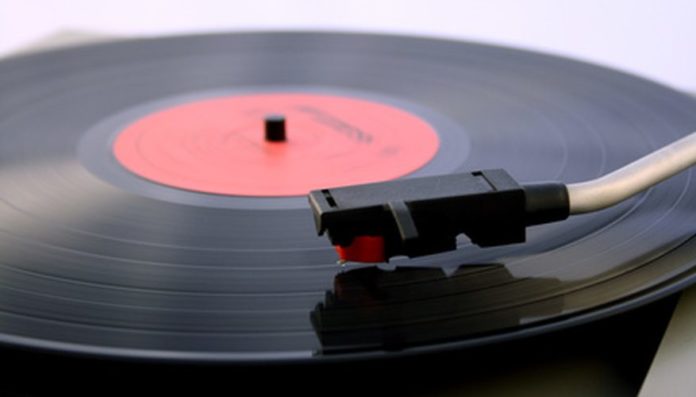
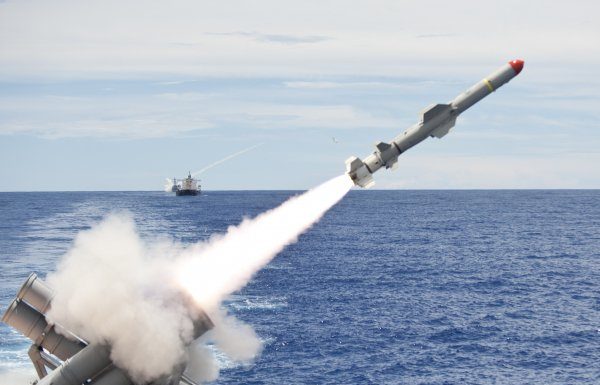










Hey, now you can even take vinyl with you
All you need is a flat mostly level surface to lay the vinyl record on
https://www.popsci.com/rokblok-record-player?dom=smartnewsgadgets
Even when vinyl was “in” I personally had the worst of luck with LPs.
Thatalbum I had just unwrapped would in way too short of time become scratched no matter what level of care I bestowed.
The best direct drive turntable, premium cartridges, the best disc cleaners all were exercises in futility for me.
I prefer the digital because it’s Frank the brute proof. I have MP3’s that still sound crystal clear after a decade of being stashed away on an old hard drive.
However, I liked the article as it gave me a nostalgic peek into someone else’s passion and got me a reminiscing about the olden days of VHS VCR’s, turntables and all the now antique stuff.
Yes, I had a VHS VCR, a direct drive turntable feeding a Heathkit stereo receiver and a pair of floor speakers. A film camera and all those things
I have two friends who actually prefer simple flip phones and one friend actually has an authentic pre-1900’s floor model totally mechanical record player that works great and has surprisingly good sound
But I’m a thoroughly modern old geezer with multiple tablets, multiple smart phones and even a laptop that runs two operating systems. So I’m also an old geek…
I’m sorry you had such bad luck with LPs. I might suggest that you try CDs, as the sampling rate of a CD is several times that of even the best MP3.
I have plenty of CDs, most of them I’ve ripped at max bitrate to MP3s and can store many times over on a 64 Gigabyte SD card, which slips into my phone
Then the phone goes into my pocket with a BlueTooth headset over my ears
but somehow the Vinyl LP Album and the artwork… just doesn’t fit on a CD case